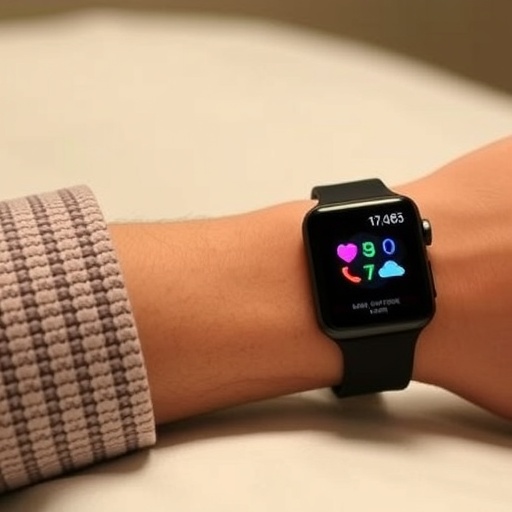
Dust storms have long been a natural phenomenon in arid and semi-arid regions, but recent research shows that their repercussions on public health are more severe than previously thought. A comprehensive study conducted by a collaborative team from National Jewish Health, Emory University, and the University of Colorado analyzed over 33,500 emergency department visits from three Southwestern U.S. states—Arizona, California, and Utah—spanning from 2005 to 2018. The results, which have been published in the esteemed journal JAMA Network Open, shed light on the urgent need to recognize and address the health threats posed by dust storms.
The researchers focused on how dust storms correlate with increased health risks, particularly for respiratory and cardiovascular conditions. The data revealed a pronounced uptick in emergency room visits on days when dust storms occurred. This spike in health-related incidents extends beyond simply respiratory issues; it includes heart failure, ischemic heart disease, cerebrovascular disorders, and culture-negative pneumonia, which is often difficult to diagnose due to its ambiguous symptoms. The nature of dust storms—characterized by strong winds lifting particulate matter into the atmosphere—creates an environment that exacerbates pre-existing health conditions while simultaneously presenting new risks for otherwise healthy individuals.
One of the poignant findings of the study indicates that emergency department visits for asthma tripled in the immediate aftermath of dust storms, with a notable 6% escalation occurring within just two days following a storm. This insight emphasizes how those with respiratory issues are particularly vulnerable during such climatic events. Furthermore, the study underscores the link between these environmental conditions and an increase in occurrences of congestive heart failure, also reflecting a 6% rise in hospital visits within the week following a dust storm. The risk of motor vehicle accidents also experiences a troubling rise, with a reported 13% increase on days when dust storms make their dramatic entrance.
Dust storms are expected to surge in frequency and intensity—largely attributed to climate change factors. This trend suggests that communities in affected areas will face even greater challenges moving forward. Researchers argue that the findings present a crucial opportunity for public health officials to be proactive in instituting strategies that mitigate health risks associated with these storms. Improved warning systems and public awareness campaigns could significantly lower the number of emergency room visits attributed to dust storm-related health crises.
Dr. James Crooks, an associate professor at National Jewish Health and the senior author of the study, has stressed the importance of understanding the immediate and long-term health impacts of dust storms. His statement rings especially true as data suggests a troubling trajectory for the future. The urgency of the issue calls for policy shifts at the municipal and state levels, with an emphasis on safeguarding vulnerable populations. This encompasses not just patients with chronic conditions but also individuals whose health may be weakened due to environmental factors exacerbated by dust storms.
Timely intervention is paramount. The results of this research could serve as a cornerstone for public health officials striving to formulate concise action plans aimed at protecting at-risk demographics. The integration of environmental health data with clinical outcomes can create better predictive models that inform healthcare and infrastructural planning. Ensuring that the pathway to effective public health strategies is laid down will require collaboration among policymakers, health officials, and community stakeholders.
To harness the full potential of the findings, researchers are advocating for continuous research and investment into health infrastructures capable of addressing the complexities of climate-related medical emergencies. Every dust storm is an opportunity for education—not only for healthcare providers but also for the general public—to better understand the precautions that should be taken to safeguard against the adverse effects of poor air quality.
As the study has garnered attention among public health circles and beyond, the avenue for further investigation remains wide open. Continuous monitoring of emergency department visits in relation to environmental data is essential for uncovering additional trends and health risks. The findings reaffirm a growing body of evidence signaling that addressing climate-related health impacts should not only be an academic endeavor but should permeate public policy discussions.
In conclusion, the confrontation with climate change cannot be understated. Dust storms serve as a vivid illustration of how environmental phenomena directly impact human health and well-being, raising critical questions about preparedness, resilience, and the need for sustained community engagement. Looking ahead, measurements and strategies should revolve around creating adaptive systems that will buffer against the harsh realities posed by a changing climate, ultimately reducing health risks and enhancing community safety.
Subject of Research: People
Article Title: Dust Storms and Emergency Department Visits in 3 Southwestern States Using NWS Storm Reports
News Publication Date: October 2023
Web References: JAMA Network Open
References: 10.1001/jamanetworkopen.2024.57666
Image Credits: National Jewish Health
Keywords: Climate change, dust storms, public health, respiratory conditions, cardiovascular health, emergency department visits, environmental health, asthma, congestive heart failure, climate-related health impacts.
Tags: arid regions health challengescardiovascular conditions related to dust stormscerebrovascular disorders and dust exposureculture-negative pneumonia and dust stormsdust storms and public healthemergency department visits in the Southwestischemic heart disease and environmental factorsJAMA Network Open study on dust stormsparticulate matter and health effectsprevalence of heart failure during dust stormsresearch on environmental health impactsrespiratory health risks from dust storms





